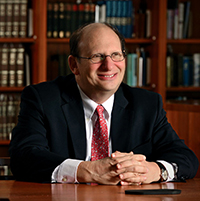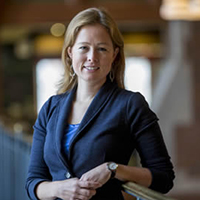For better or worse, gentrification – the displacement of poorer residents in rebounding urban neighborhoods – is not a widespread problem in St. Louis today, said Henry S. Webber, executive vice chancellor for administration at Washington University in St. Louis and professor of practice in the Sam Fox School of Design & Visual Arts and at the Brown School. But, one day, it might be.
“Gentrification is a problem generally created by positive things – rising wages, job centers, changing preferences for living in urban areas,” Webber said. “St. Louis has had less population and income growth than cities like San Francisco and New York, where gentrification affects many people. But as we economically become more successful, the likelihood of gentrification will increase. How will we, as a region, respond?”
Webber and Molly Metzger, PhD, assistant professor at the Brown School, will consider that question at a St. Louis Up Close event, “Gentrification – Fact or Fiction; Truth or Myth.” Sponsored by the Gephardt Institute for Civic and Community Engagement, the discussion will explore how urban renewal can be accomplished responsibly and ethically.
Here, Webber and Metzger, who co-teach the course “Developing Sustainable Urban Communities,” discuss gentrification and explore ways to prevent it.
Why is gentrification a problem?
Metzger: Some people see gentrification as a good thing. In a city like St. Louis that has lost so much of its population, the argument goes that it is good for people to move back into the city and expand the tax base. But the big question is, who is really benefitting from that? And who is being displaced? We have a long history in this country of displacing black communities, often for ostensibly good purposes such as building a highway or expanding an airport. Or we think of concentrated poverty as so pathological that the best thing we can do is destroy neighborhoods. But this kind of urban renewal only perpetuates racial segregation, while also seriously disrupting the social and political networks of communities of color. When people are being displaced literally – by being priced out, by the loss of rental units – but also displaced culturally, it’s a problem. And that is happening in certain St. Louis neighborhoods right now.

Yet St. Louis has one of the nation’s most affordable housing markets. Why discuss this topic?
Webber: In St. Louis we do have neighborhoods with gentrification pressure, but that tends to be, in my opinion, much less of a problem on balance than the problem of concentrated poverty. So the problem exists, but it is localized and limited. Still, it is important to explore how widespread gentrification is and what you might do about it in areas where it is occurring. There is a widespread belief that St. Louis needs more economic growth and less concentrated poverty. But as we achieve that, we want to make sure the benefits of community development are shared with long-term residents. Let’s think proactively about how these benefits accrue as more neighborhoods strengthen.

How would you recommend maintaining a healthy balance?
Metzger: In a region that is hypersegregated by race and by class, these integrated neighborhoods are an opportunity to maintain sustained, diverse communities. I think there is a three-pronged approach that gentrifying communities can take. One is expressing a “yes in my backyard” voice for affordable-housing development. Often, neighborhoods will fight low-income housing, and residents will use subtle, or not-so-subtle, racist language, saying they don’t want “those people” here. But we’ve seen recently, in mid-south St. Louis particularly, that people from all backgrounds can and will stand up for affordable housing. That gives me some hope. The second approach is policy change. For instance, Section 8. Previously, it was legal for a landlord in St. Louis to say, “I don’t take Section 8 renters,” but not anymore. We would love to see that kind of fair housing law extended into St. Louis County. And the third is to connect low-income homeowners to resources that can help them stay in their homes. Residents of gentrifying neighborhoods shouldn’t assume the market must decide if their neighborhoods stay diverse. The future of their neighborhoods is actually in their hands.
Comments and respectful dialogue are encouraged, but content will be moderated. Please, no personal attacks, obscenity or profanity, selling of commercial products, or endorsements of political candidates or positions. We reserve the right to remove any inappropriate comments. We also cannot address individual medical concerns or provide medical advice in this forum.